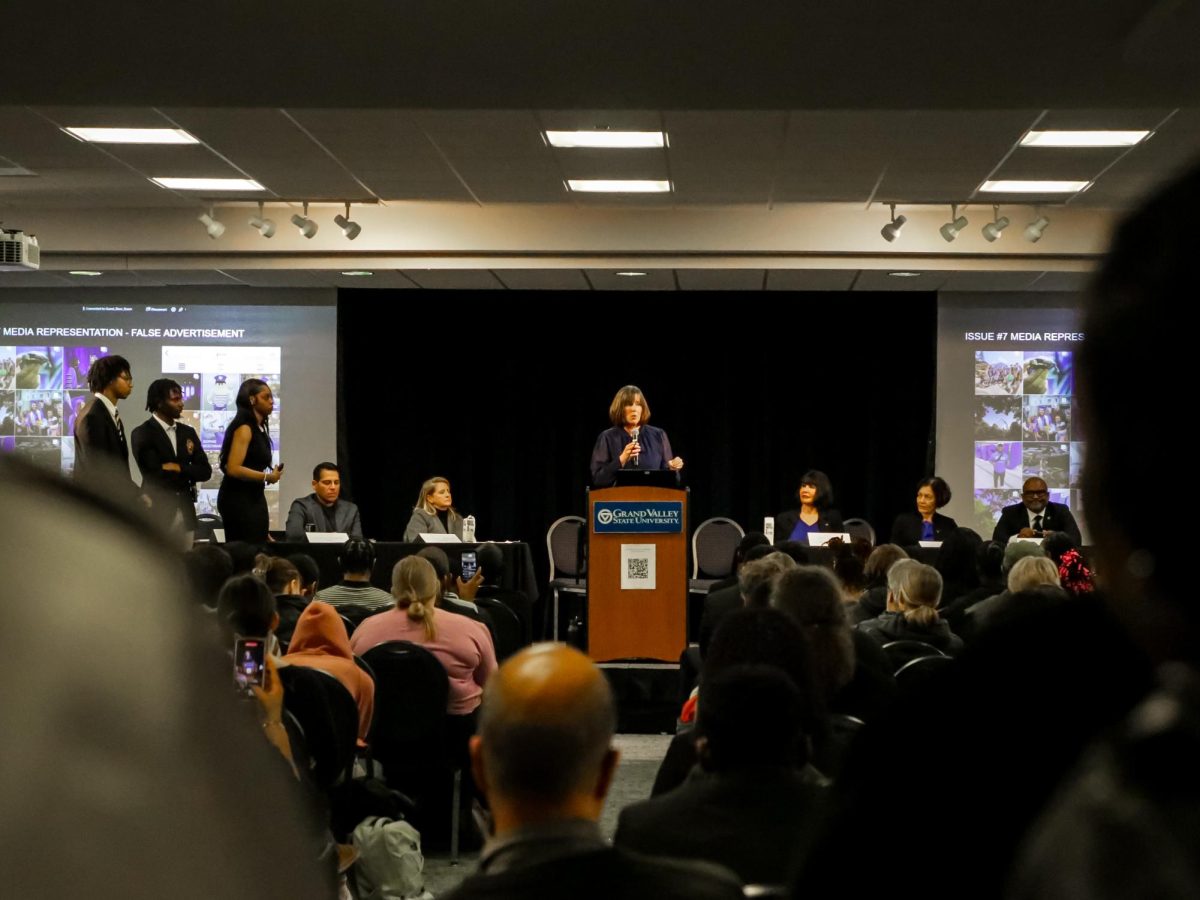Carillonneurs from all across the globe perform for anniversary concert

GVL/Archive The clock tower on GVSU’s Allendale campus has a 44 bell carillon. GVSU has two of the 14 carillons in the state of Michigan.
Aug 19, 2019
Throughout June, July and August, carillonneurs have been celebrating 25 years of performances at the Cook Carillon Clocktower, located on Grand Valley State Univerisity’s Allendale campus, and the Beckering Family Carillon, located on GVSU’s Pew campus.
According to The Guild of Carillonneurs in North America’s website, “A carillon is a musical instrument composed of at least 23 carillon bells, arranged in chromatic sequence, so tuned as to produce concordant harmony when many bells are sounded together. It is played from a keyboard that allows expression through variation of touch.”
Lisa J. Lonie was one of the performers for the series. During her concert on August 11, she performed a wide variety of music, including Broadway songs, modern television themes and even original songs.
Lonie said the natural environment of the concert changes the experience. “Since the music isn’t confined to a concert hall, but spreads freely (upwards of a mile) over the countryside or city landscape, it’s free live music to anyone who wants to take a pause and listen,” Lonie said.
Another performer, Dr. Laura Ellis, expressed similar admiration for the open nature of the carillon.
“Part of the allure, I think, is that one can enjoy the beauty of nature while listening to the beauty of the bells,” Ellis said. “The carillon, as an open-air instrument, becomes a part of the musical fabric of the area (be it a university campus, church grounds, city park). The instrument can be shared by all . . . the passer-by, the child playing in the grass, the music lover, and the professional.”
Ellis performed several pieces composed for the carillon, such as Moonlight Malagueña, arranged by Karel Keldermans.
“A music impossible to suppress, reaching us persistently, insistently, from its belfry, causing us to look up and not down, to allow our hearts and our minds to be transported to times other than these, appealing to our imagination and our keenest senses of sight and sound, a music which is truly something floating somewhere between earth and heaven,” Ellis said.
An instrument with the scale of a carillon can have some difficulties and challenges to play. Lonie goes on to explain a few of these challenges.
“Every carillon is different: the number of bells, the way it sounds, who cast the bells, the orientation of the playing console, where the carillon is housed, and most importantly who the audience is,” Lonie said. “Am I playing before a worship service, on a university campus, or at a botanical garden?” These are some of the questions that Lonie considers when she tours.
“A one-size-fits-all touring program usually doesn’t work,” Lonie said.
Ellis echoes some of the same sentiments regarding the variation in carillon design. “These challenges, in reality, are what make the instrument unique,” Ellis said. “In fact, rather than seeing these things as challenges, these differences are what makes performing on different instruments so exciting.”
When asked what makes the carillon an alluring instrument, Ellis said, “Part of the allure, I think, is that one can enjoy the beauty of nature while listening to the beauty of the bells.” He said, “The carillon combines my love of being outside with my love of music — a perfect combination!”
“As a kid, I dreaded piano recitals. I had terrible stage fright. I loved to perform, but all those eyes boring into my back really terrified me,” Lonie said. “When I discovered the carillon as a teenager, I loved it! To be able to make music and not have to see the audience was perfect! Now, more than 40 years later, I don’t suffer from stage fright, but rather experience joy and satisfaction when I play knowing someone, somewhere is listening. That feeling is really unsurpassed for me.”
The Carillon Concert Series celebrated twenty-five years of carillon performances and took place from June 23 to August 18. The series featured eight different performers from all across the globe.






















